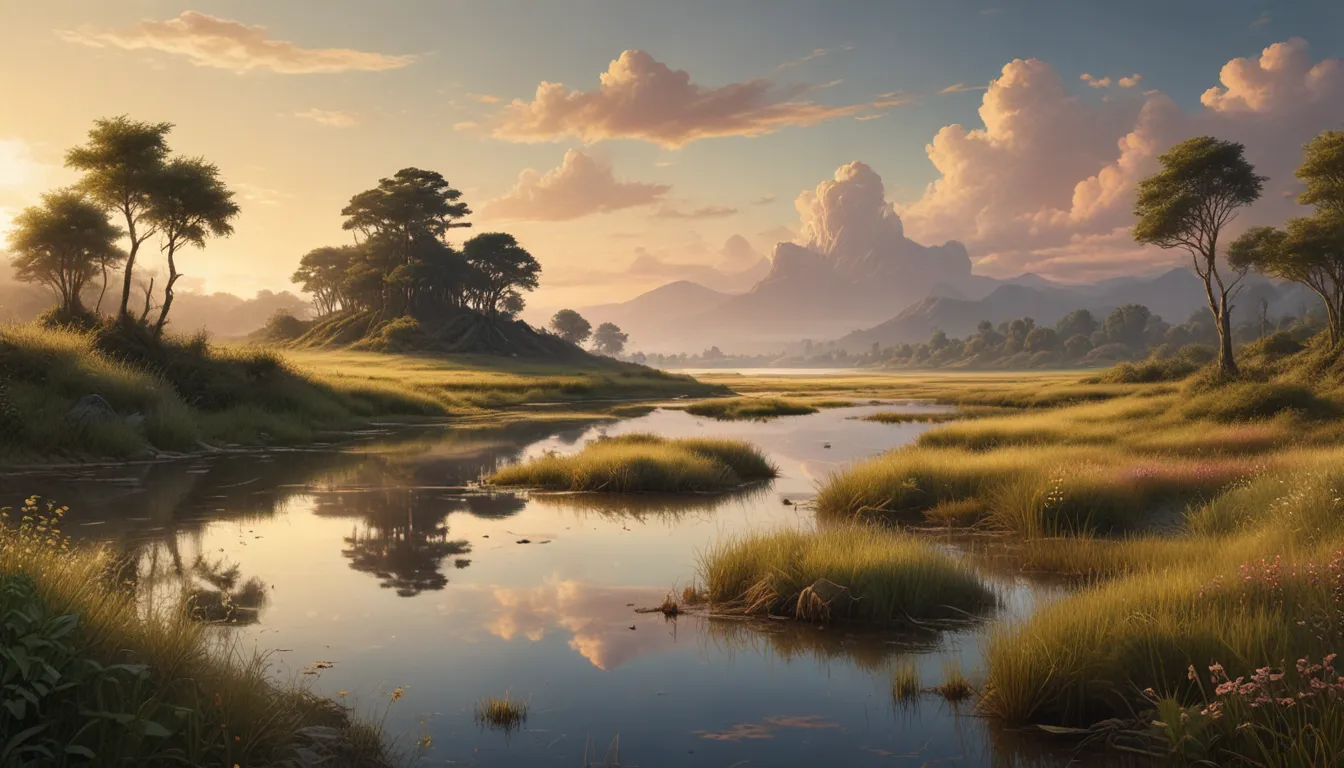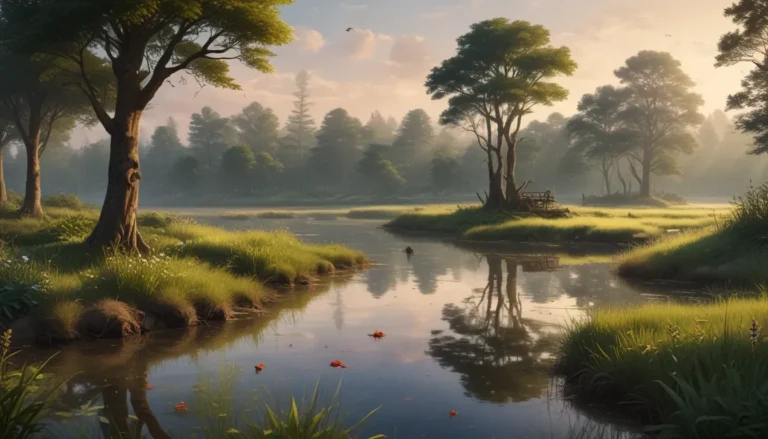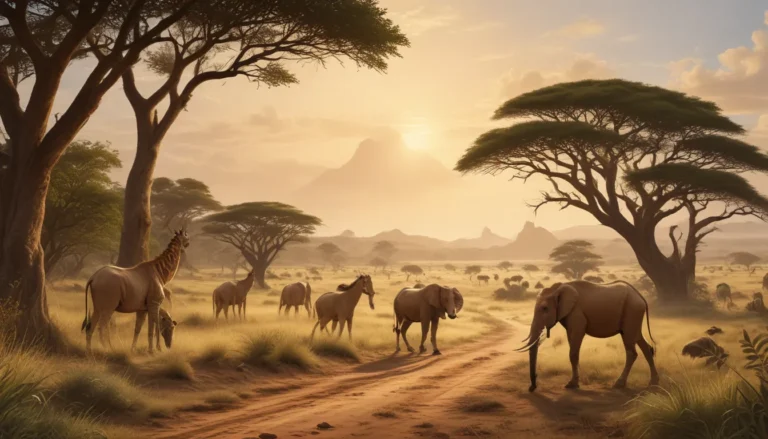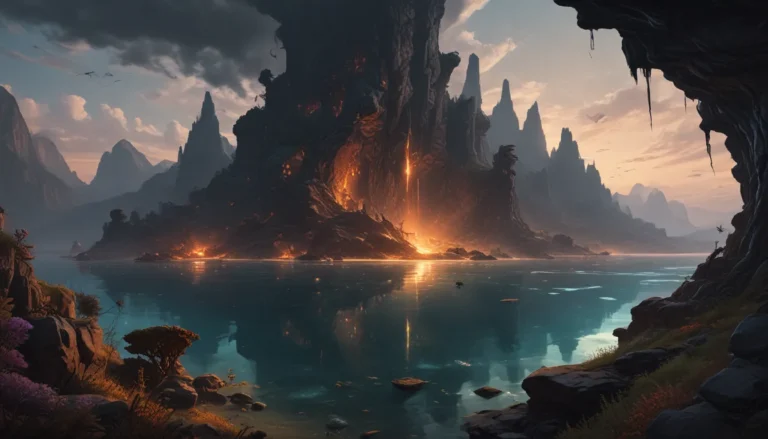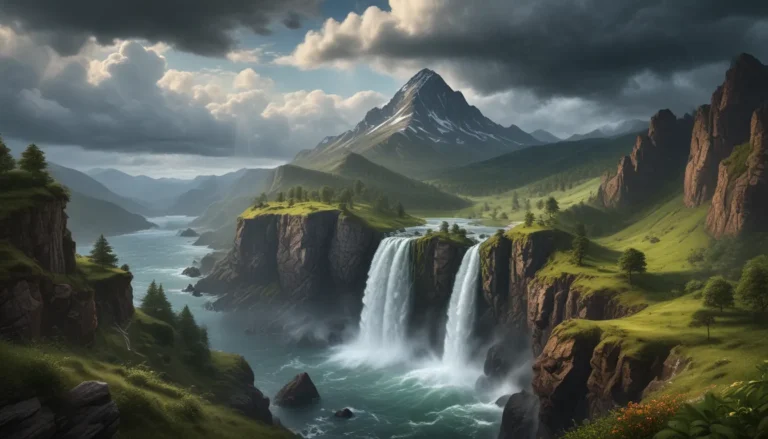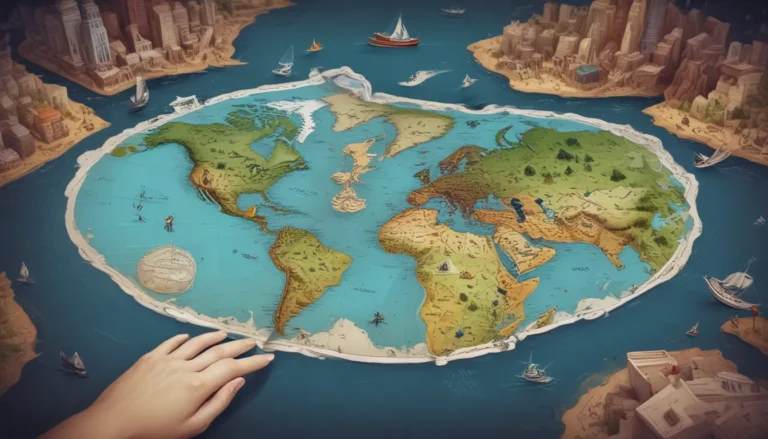A Note About Images: The images used in our articles are for illustration purposes only and may not exactly match the content. They are meant to engage readers, but the text should be relied upon for accurate information.
If you’ve ever passed by a marshland without a second thought, prepare to be amazed by the hidden wonders that lie within these unique ecosystems. Often overshadowed by majestic mountains or lush forests, marshlands are essential habitats that support a diverse array of plant and animal life. In this article, we will uncover 11 extraordinary facts about marshlands that will leave you in awe of their beauty and importance.
The Diversity of Marshlands
One of the most captivating aspects of marshlands is their incredible diversity. These ecosystems are bursting with life, from the graceful cattails and reeds that provide shelter for birds to the amphibians, reptiles, and small mammals that thrive in the water and mud. Marshlands are a tapestry of interconnected habitats, each playing a vital role in sustaining the delicate balance of this unique environment.
The Vital Role in Carbon Sequestration
Marshlands are unsung heroes in the fight against climate change. These ecosystems act as crucial carbon sinks, absorbing carbon dioxide during photosynthesis and storing it in plant biomass and sediment layers. By capturing greenhouse gases, marshlands help mitigate the impacts of climate change and safeguard the health of our planet.
Natural Water Purifiers
Imagine marshlands as nature’s own filtration system. The dense vegetation in these habitats works tirelessly to remove sediments and pollutants from water as it flows through. This natural purification process ensures that the water reaching rivers and other bodies of water downstream is clean and healthy for both wildlife and humans.
A Haven for Wildlife Breeding
Marshlands serve as vital breeding grounds for a multitude of species, including fish, birds, and amphibians. The abundance of food and shelter in these habitats creates an ideal environment for reproduction, ensuring the survival of many species and contributing to the richness of biodiversity.
Essential Bird Habitats
Migrating birds rely on marshlands as essential stopover points on their long journeys. These ecosystems provide a resting place and a plentiful food source for birds, supporting avian populations and promoting biodiversity. Birdwatching enthusiasts will find endless delight in observing the diverse species that call marshlands home.
Guardians Against Flooding
In times of heavy rainfall and floods, marshlands act as natural buffers, absorbing excess water and releasing it slowly. By storing and regulating water flow, these ecosystems help prevent or minimize flood damage to neighboring communities, showcasing their invaluable role in flood control.
The Healing Power of Medicinal Plants
Beyond their ecological significance, marshlands are treasure troves of medicinal plants. Species such as marsh woundwort, marshmallow, and water mint have been used for centuries in traditional medicine to treat various ailments and promote healing. The biodiversity of marshlands offers a wealth of natural remedies waiting to be discovered.
Ecotourism Delights
Nature enthusiasts and eco-tourists flock to marshlands for their unique biodiversity and stunning landscapes. Whether you’re a birdwatcher, hiker, canoeing enthusiast, or a photography aficionado, marshlands offer a wealth of activities to engage with the beauty of these natural wetlands. Immerse yourself in the tranquility of marshland ecosystems and witness the wonders of the natural world up close.
Nurturing Local Communities
Marshlands are not just nature’s marvels; they also sustain local communities by providing valuable resources and livelihoods. Fishing, grazing, and harvesting of marshland products are essential economic activities for many communities, supporting their well-being and fostering a deep connection with the land.
Cultural Significance and Heritage
For many indigenous communities worldwide, marshlands hold profound cultural significance. These ecosystems are intertwined with traditional practices, folklore, and spiritual beliefs, embodying the rich heritage of the communities that have lived in harmony with marshlands for generations. The cultural importance of marshlands adds another layer of appreciation for these extraordinary habitats.
Facing Threats from Human Activities
Despite their ecological and cultural value, marshlands are under siege from various human activities. Urban development, pollution, drainage, and climate change present significant challenges to the preservation and conservation of these precious ecosystems. It is crucial to take action to protect and safeguard marshlands for future generations to enjoy and benefit from.
Conclusion: Embrace the Wonders of Marshlands
In conclusion, marshlands are not just landscapes; they are vibrant, dynamic ecosystems that play a vital role in supporting life on Earth. From their biodiversity to their ecological functions, there is much to discover and appreciate about these extraordinary habitats. Whether you’re a seasoned biologist or a curious observer, marshlands offer endless opportunities for learning, exploration, and wonder. Next time you encounter a marshland, take a moment to marvel at its beauty and reflect on the remarkable facts that make it a truly unique environment.
FAQs
-
What is a marshland?
A marshland, also known as a marsh or wetland, is a low-lying coastal area that is regularly saturated with water. It is characterized by the presence of marsh plants and serves as a habitat for various wildlife species. -
How are marshlands formed?
Marshlands are typically formed near bodies of water, such as rivers, lakes, and coastal areas. They develop over time through the accumulation of plant debris, sediments, and organic matter, creating a distinct ecosystem rich in biodiversity. -
Why are marshlands important?
Marshlands are crucial for their natural filtration capabilities, purifying water by removing pollutants and nutrients. They also serve as vital habitats and breeding grounds for a wide range of species while offering protection against erosion and storm surges. -
Are marshlands found worldwide?
Yes, marshlands can be found across the globe in various ecosystems, including coastal areas, river basins, and wetland regions. Each marshland exhibits unique characteristics and supports a diverse array of plant and animal life adapted to its specific environment. -
Are marshlands at risk?
Unfortunately, marshlands face numerous threats, such as pollution, habitat destruction, climate change, and invasive species. Conservation efforts and sustainable practices are essential to safeguard and preserve these valuable habitats for future generations to enjoy and benefit from.
Explore the wonders of marshlands and uncover the intricate web of life that thrives within these unique ecosystems. Join us on a journey of discovery through the Tidewater Region, where history merges with coastal landscapes, or delve into the pristine natural reserves of Virginia Beach to witness the diverse creatures that call these habitats home. Embrace the beauty of nature and immerse yourself in the marvels of marshlands, where every moment is an opportunity to learn, explore, and appreciate the wonders of the natural world.
Our commitment to delivering trustworthy and engaging content is evident in every fact we share. Contributed by real users like you, our diverse insights and information undergo rigorous review by our dedicated editors. Trust in our dedication to quality and authenticity as you embark on a journey of exploration and discovery with us.
